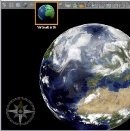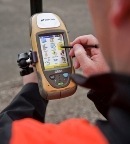Apart from the published magazine few days ago by Geoinformatics, there are some other issues, published this month in its portal, that worth sharing. Although some of these ads look like (Spanish idiom:‘tienen pinta’) being sponsored; they contribute a bit to the progress that technology is having now and sets the standard towards what we expect for the rest of the year mainly in the platforms and teams integration whose gap is diminishing. At least, it seems true, in theory.
 Access to Virtual Worlds
Access to Virtual Worlds
- Microsoft and ESRI agreement allows accessing Virtual Earth’s data from ArcGIS Desktop or built applications with ESRI’s SDK including JavaScript, Flex, and Silverlight. With Google Earth… there’s nothing yet.
- Additionally, Safe Software has announced that FME can access OpenStreetMap data, which would mean an important step in linking data that has been input by about 50,000 users which have contributed to it voluntarily and will continue doing so. Let us hope this alternative will join other more famous tools than FME.
New Technologies
 Topcom has announced its most innovative GNSS Receiver, which promises, in a portable equipment, a work with dual -frequency and centimeter’s precision. It operates with TopSURV and ArcPad, according to its design “almost all in one”. It includes GPS + GLONASS dual-frequency receiver + cellular modem + Windows OS.
Topcom has announced its most innovative GNSS Receiver, which promises, in a portable equipment, a work with dual -frequency and centimeter’s precision. It operates with TopSURV and ArcPad, according to its design “almost all in one”. It includes GPS + GLONASS dual-frequency receiver + cellular modem + Windows OS.- SuperGeo launches its beta release of SuperGis Server, which complements the product line this company has for desktop and mobile. Since a few days ago I’m taking a look to this line, which incidentally is quite accessible in terms of price.
OGC
- Athina Trakas, geographer of the University of Bonn assumes the European Directorate for Services by the Open Gis Consortium (OGC). This entity was quite linked in recent years to the Consultant’s Center of Geographic Information Systems, CCGIS, in Germany.
 The OGC integrates web coverage’s processing as supported format. It’s interesting because is not only add a P to WCS standard, as WCPS includes a standard for protocol extraction, processing and analysis of multidimensional coverage both in clouds of points as in images that provide such data.
The OGC integrates web coverage’s processing as supported format. It’s interesting because is not only add a P to WCS standard, as WCPS includes a standard for protocol extraction, processing and analysis of multidimensional coverage both in clouds of points as in images that provide such data.
 Autocad Software, Bentley Microstation, Gis Google Earth, Gis System Geomate Provides Services For Complete Gis Software And Solutions, Autocad Software, Autocad Courses, Bentley Microstation, Microstation Software, Gis Google Earth, Open Source Gis And More.
Autocad Software, Bentley Microstation, Gis Google Earth, Gis System Geomate Provides Services For Complete Gis Software And Solutions, Autocad Software, Autocad Courses, Bentley Microstation, Microstation Software, Gis Google Earth, Open Source Gis And More.